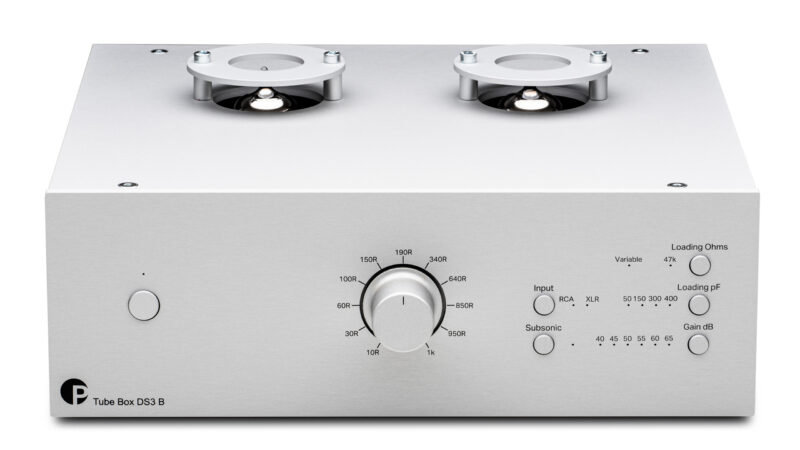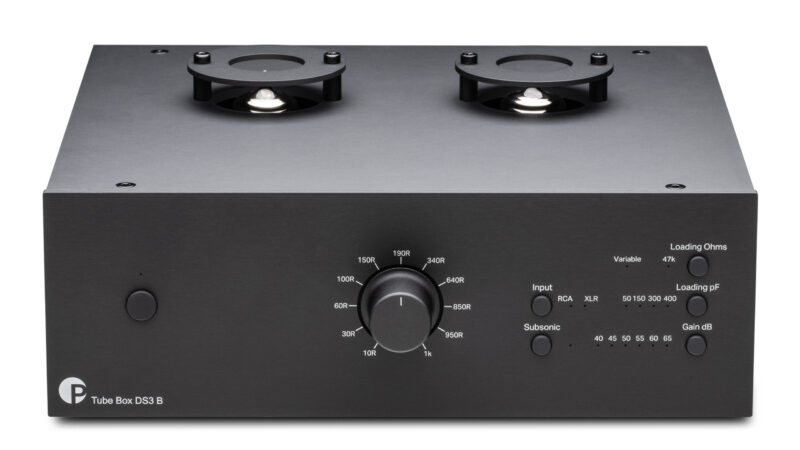No one has a larger selection of turntables and turntable accessories than the Austrian company Pro-Ject. They make players in all price ranges, pickups, tonearms, record brushes, cleaning equipment and, of course, phono cartridges. Not one or two, no. They have more phonostages than I can count.
Need a turntable input? Pro-Ject has an affordable solution. Have a turntable but want better sound? Pro-Ject comes to the rescue. One of many options is the new Tube Box DS3 B – B for balanced – which is a compact phono stage in the advanced class.
With radio valves
Yes – you read that right! Radio valves. Old-school technology, but boy, does it sound good when it works as intended. There’s a reason valve amplifiers are still made, and there always will be. At least as long as there are people willing to pay for quality sound with valves as part of the amplifier circuit.
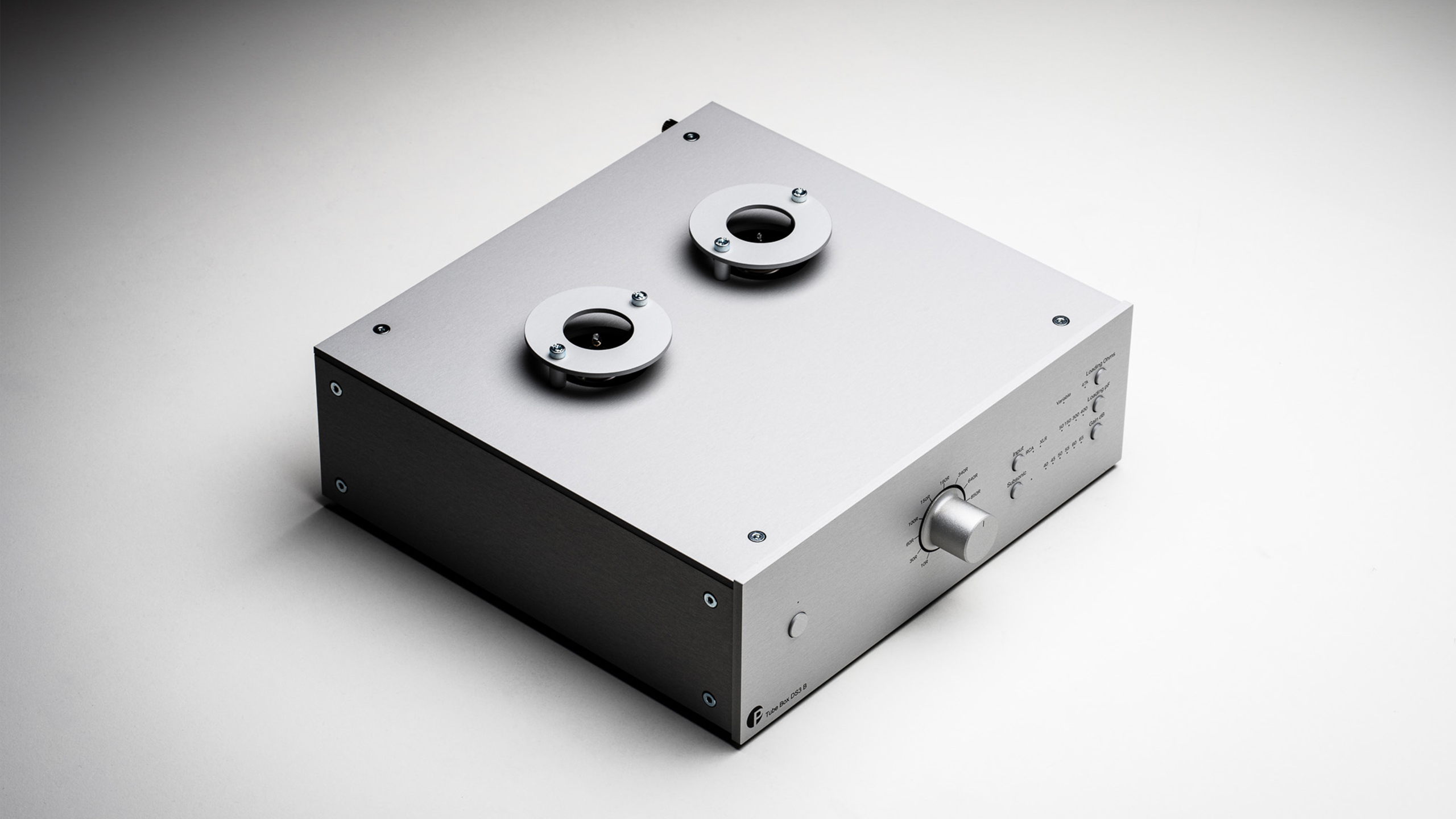
Well-known manufacturers like Audio Reseach, McIntosh and Octave Audio make some of the best amplifiers we’ve tested. They all use valves in amplifiers, so there’s nothing wrong with using them in a phono stage as well.
Except for one thing. Noise. Especially in a phono stage for moving coil pickups, which need a lot of gain to turn a signal with a voltage of 0.3 mV to 2.5 V.
In a phono stage – also known as an RIAA stage – noise is often the biggest problem. Extreme amplification pulls noise all the way out to the speakers. Most of it can be cancelled out with a properly grounded circuit. Some use filters and galvanic and mechanical shielding. This contributes to a higher cost price and ultimately a more expensive product.
Tube Box DS3 B
Pro-Ject didn’t spend a lot of money on the chassis of the Tube Box DS3 B, but they certainly spent more on the technology under the hood.
Two small E88CC valves protrude from the top plate and the space between them allows heat to escape. Here, Pro-Ject’s engineers have created a symmetrical and balanced circuit for each channel, which reduces noise from input to output. There are also balanced inputs and outputs, and a mini XLR for balanced connection to a turntable with balanced cables from MC pickups.
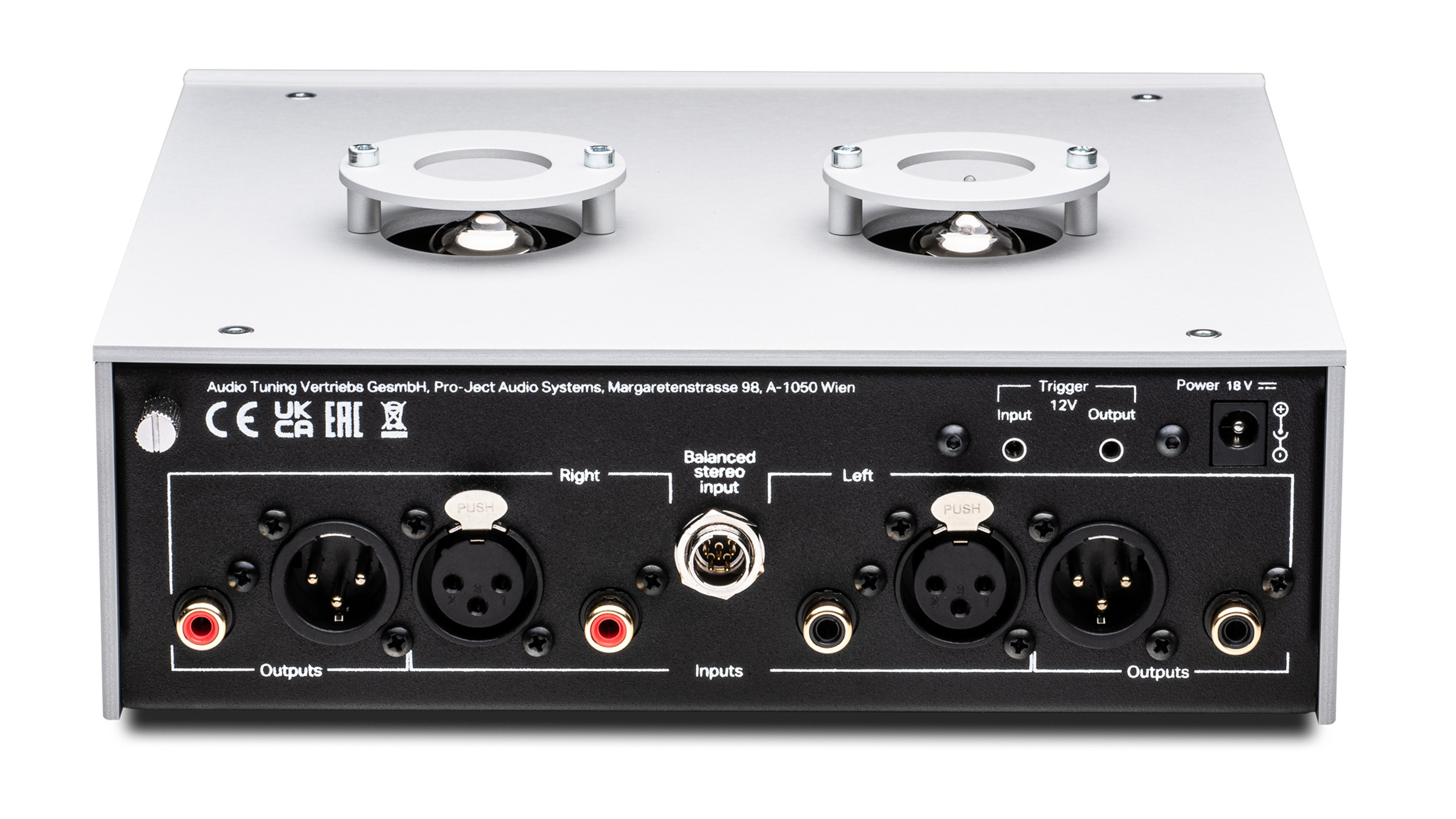
While other phono stages require you to remove the top cover or dismantle and flip the entire box to change impedance and gain, everything can be controlled from the front of the Tube Box DS3 B.
You can set the load impedance continuously from 10 ohms, all the way up to 1000 ohms for those who may have older iron-core pickups. There’s also a 47 kOhm setting for MM pickups, and capacitance can be set in four steps with a switch on the front. Gain can be adjusted in six steps and there’s also a switch to switch between the balanced and unbalanced inputs on the back.
Settings
All this makes the Tube Box DS3 B very usable for a wide range of cartridges, and you can even have two turntables connected at the same time.
With the ability to continually adjust the load impedance while playing, it’s easier to fine-tune for an optimal result. With an MC pickup, you can start at 10 ohms and slowly increase the load impedance until you like what you hear. But I recommend that you first check what the manufacturer recommends; there’s no point in setting the load impedance to 10 ohms if the pickup should ideally have 200 ohms. Use the manufacturer’s recommendation as a starting point.
In the user manual, Pro-Ject has provided examples of how to set parameters for three different pickups. An Ortofon 2M Red is an MM pickup, which should have an input impedance of 47 kOhm, a capacitance of 150pF and a gain of 40 dB. Corresponding values for an Ortofon Quintet Red, which is an MC pickup, are 50 Ohm and 60 dB. Capacitance is not relevant for MC.
Silky smooth resolution
Once the Tube Box was plugged in and warmed up, I started listening for noise.
At first, I heard nothing. Zero. I had to check that the cables were connected and that the volume was turned up. It was there. Still no noise. It was only with the gain at 65 dB and the volume turned all the way down that it was possible to hear faint hiss in the background. But only if I put my ear close to the speaker. So with that out of the way, it was time to play records.
A better phono stage may be what it takes to lift even the smallest nuances out of the grooves on the vinyl.
It was a very pleasant experience. The first impression was an open soundstage, clearly defined details and a relatively slim tonal balance. The latter was improved by increasing the load impedance on an Ortofon Cadenza Bronze. The gain was set to 60 dB. The soundstage fell into place and the dynamics improved. Still a slightly leaner sound than from a Primare R35, but only in the bass. The rest sounded silky smooth, not dynamic in the same way as a Hegel V10, but at the same time more open and airy than from a cheaper Rega Fono.
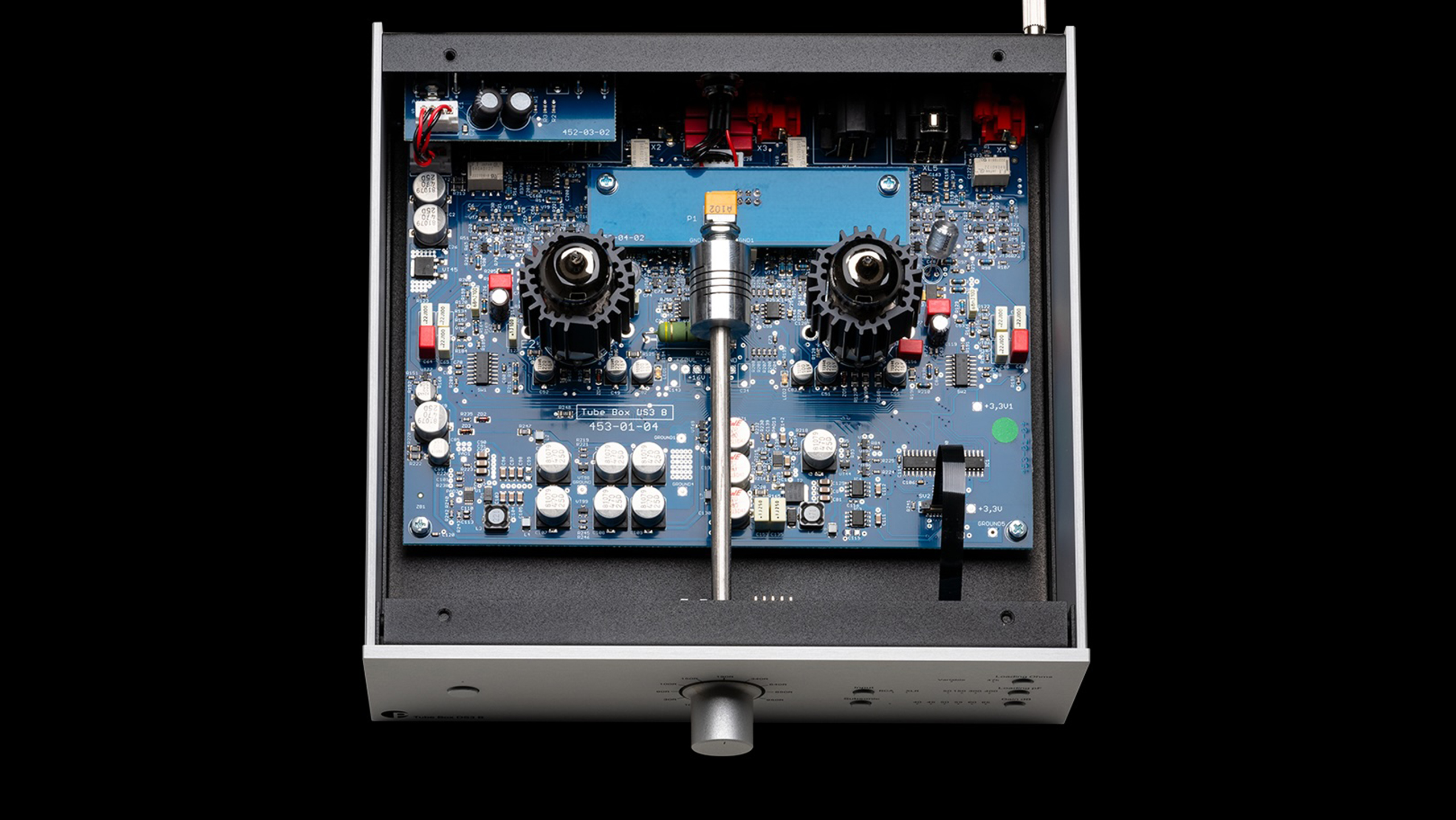
With the resolution in place, the soundstage opened up and it’s not often I hear so many little details from Jack DeJohnette’s percussion on Keith Jarrett trio Still Live.
With a little more dynamic flair and a powerful low octave, this would have been a definite six. Perhaps that’s something you can achieve with a Pro-Ject Power Box. A larger separate power supply sold as an option. We never cease to be amazed at how much impact a better power supply can have on the sound.
The Gold Notes PH-10 is an example of just that. It’s the foundation of the bass that benefits from being connected to a bigger power supply.
The Tube Box’s open sound is comparable to more expensive phono stages we’ve tested and is somewhat reminiscent of the smooth and resolved sound of Rega’s phenomenal Aura MC, which costs four times as much.
Conclusion
The Pro-Ject Tube Box DS3 B is not only a flexible and user-friendly phono stage. The amplifier opens up the sound of vinyl records in exemplary fashion, sounding resolved, detailed, silky smooth and ear-friendly. Tube Box is a great value for money, especially for those who can benefit from the balanced signal routing from input to output. Noise is minimised and the fine sound is infectiously attractive, no matter what kind of music is coming out of the grooves. The Pro-Ject Tube Box DS3 B is a well-playing alternative to a Rega Aria, Electrocompaniet ECP2 II, Primare R35 and Hegel V10.
The Gold Note PH-10 unlocks sounds you've never heard from your vinyl collection. And it's one of the most user-friendly phono stages we've tested.

We think
Open and transparent soundstage with beautiful, silky smooth sound. Virtually noise-free. Very user-friendly and compact. Can be upgraded with a better power supply. The dynamic contrast in the lowest octave is somewhat cautious.
949 €
Specifications
- Type: Phono preamplifier
- For: Moving Coil and Moving Magnet pickups
- Technology: 2 x E88CC/6922 vacuum valves
- Connections: RCA unbalanced in/out, XLR balanced in/out, balanced mini XLR
- Load Ohm: 10 – 1000, 47 kOhm
- Capacitance: 50/150/300/400 pF
- EQ: RIAA
- Gain: 40/45/50/50/55/60/65 dB
- Signal to noise ratio: >87 dB
- Dynamic range: Not stated
- Dimensions and weight: 20 x 7 x 19 cm, 1.56 kg
- Colour: Black or silver
- Web: project-audio.com


